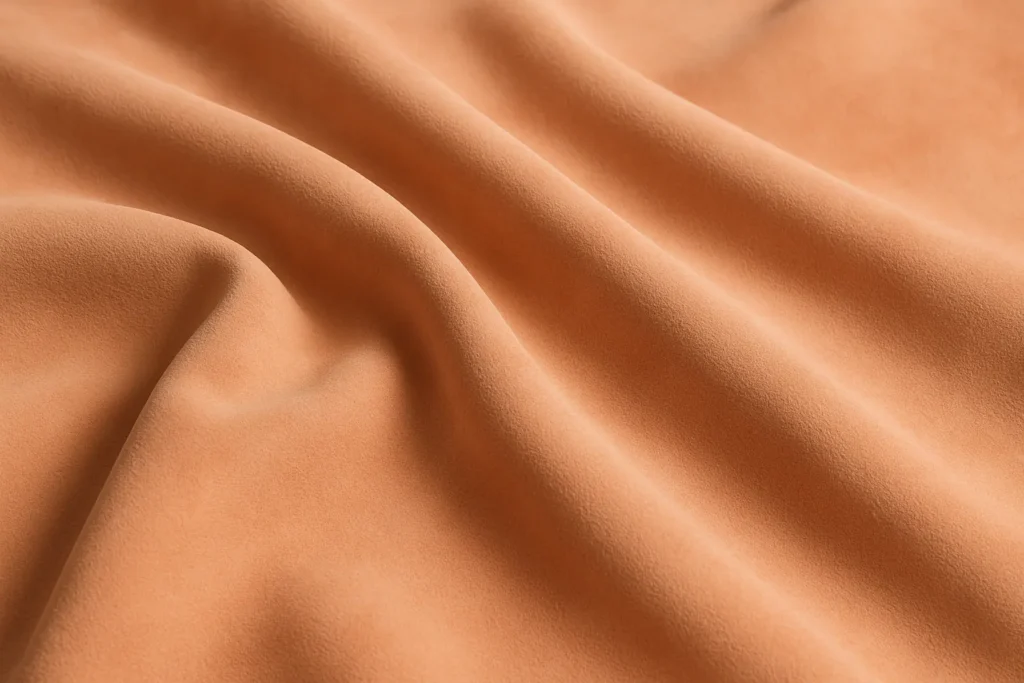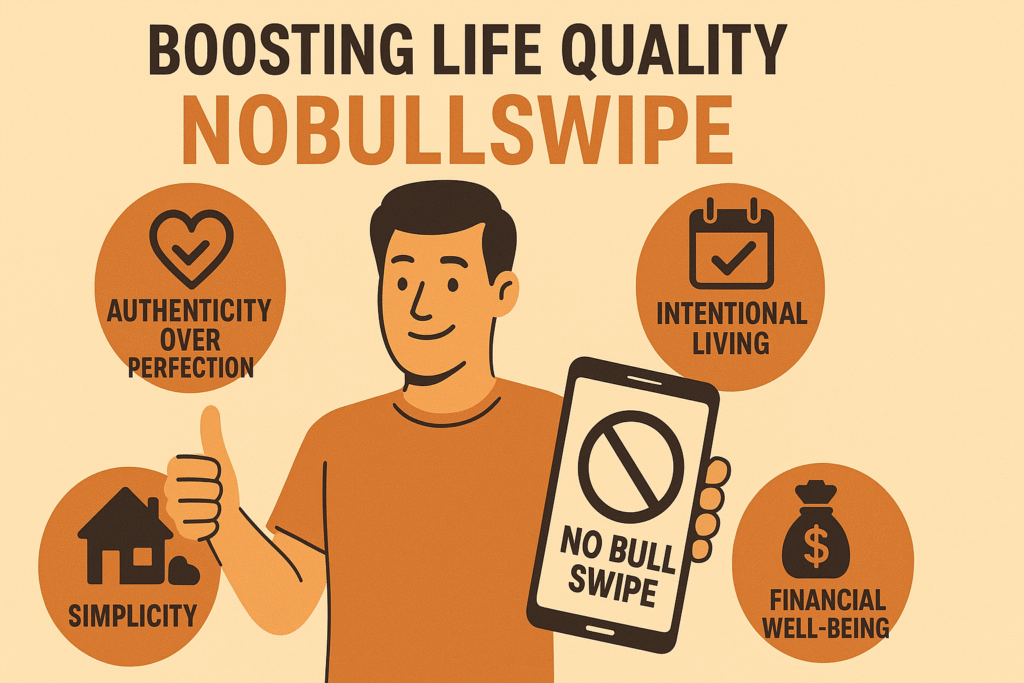When people hear the term peach suede fabric, the first thing that usually comes to mind is its soft, velvety texture. It’s a fabric that feels smooth against the skin, with a surface finish that looks refined yet cozy. The peach part doesn’t just refer to the color—it often describes the subtle, fuzzy feel that’s similar to the skin of a peach. Combined with the classic look of suede, this fabric has become a favorite for anyone who values comfort and elegance in their materials.
You’ll often find peach suede fabric being used in different settings, from stylish fashion pieces like jackets and handbags to practical home décor such as sofas, cushions, and curtains. Its charm lies in versatility: it’s luxurious enough for special occasions yet durable enough for everyday use. Whether you’re exploring it for clothing, upholstery, or small decorative accents, this fabric has a unique way of adding warmth and sophistication to any design.
What Is Peach Suede Fabric?
At its core, peach suede fabric is about texture and finish. It’s designed to capture the softness of a peach’s skin while giving you the classic elegance of suede. To understand it better, it helps to look at the different types of fabrics people often confuse with it.
- Real suede comes from the underside of animal hide, usually leather. It has a natural nap that feels soft but can be tricky to maintain. A real leather suede fabric in peach tones can look stunning in high-end fashion or upholstery but often requires extra care and investment.
- Faux suede (also called synthetic suede) is made from fibers like polyester or microfiber. It mimics the look and feel of real suede but is more affordable, lightweight, and easier to clean. Peach faux suede is especially popular for upholstery and DIY projects.
- Peach skin fabric is slightly different. It’s usually made of polyester or cotton blends, finished with a special sanding process that raises tiny fibers, giving it a peach-like feel. It’s smoother and lighter than traditional suede, making it a good choice for clothing, bed linens, and decorative accents.
The “peach finish” is what ties these fabrics together. Through brushing or sanding, the surface gains a soft, velvety texture that feels pleasant to the touch without being too heavy. Depending on the fiber content—polyester for durability, cotton blends for breathability, or microfiber for extra smoothness—you can choose the type of peach suede fabric that fits your project best.
How Peach Suede Fabric Is Made
The beauty of peach suede fabric lies not just in how it feels, but in how it’s crafted. Every stage of its making adds something to the final look and texture.
It begins with the base weave. Fabrics can be woven in plain, twill, or satin styles, and each has its own effect. A plain weave gives strength and stability, making the fabric more durable. Twill weaves add a bit of texture and flexibility, while satin weaves create a smoother, shinier surface that highlights color beautifully.
Once the fabric is woven, it goes through special finishing techniques. This is where the “peach finish” is created. The fabric is gently brushed, sanded, or peached, which lifts tiny fibers on the surface. This gives the cloth its signature soft, suede-like feel—similar to running your fingers over the skin of a peach. The process is carefully balanced; too much sanding can weaken the fabric, while too little won’t achieve that luxurious finish.
Color is the final touch, and with peach tones, it requires extra care. Dyeing peach shades can be challenging because lighter colors often show even the smallest inconsistencies. A high-quality dye process ensures that the color is even, rich, and long-lasting, whether the fabric is meant for fashion or home décor.
Together, these steps transform ordinary cloth into something special: a fabric that looks refined, feels soft, and carries a timeless elegance.
Key Specifications to Check Before Buying
When you’re considering peach suede fabric, a few technical details can make a big difference in how it performs and looks in real use. Understanding these specifications will help you choose the right type for your project.
- Weight (GSM): Fabric weight, measured in grams per square meter, tells you how heavy or light the material is. Lighter weights (around 100–150 GSM) work well for clothing, while heavier options (250+ GSM) are better suited for upholstery and furniture.
- Width and Thickness: Most peach suede fabrics come in standard widths, but checking this ensures you have enough coverage for larger projects like sofas or curtains. Thickness adds durability, especially in upholstery where the fabric faces regular wear.
- Nap (Pile): The nap is the direction of the raised fibers on the surface. Running your hand across peach suede often shows this clearly—the pile can look darker or lighter depending on the angle. A consistent nap gives the fabric its uniform, luxurious finish.
- Stretch and Breathability: Some peach suede fabrics, especially those blended with spandex or microfiber, offer a gentle stretch. Breathability is another factor—cotton blends feel cooler, while polyester versions focus more on durability.
- Durability: Look for resistance to abrasion and colorfastness. Since peach is a lighter shade, strong dyeing and quality finishing are key to preventing fading.
- Shade Variations: One important detail with peach tones is how much they shift in different lighting. The same fabric can look soft pink in daylight and warmer under indoor lights. Always test a fabric sample in your intended setting before committing to larger pieces.
By keeping these details in mind, you’ll not only buy with confidence but also avoid common disappointments like mismatched shades or fabric that doesn’t hold up over time.
Popular Uses of Peach Suede Fabric
One of the reasons peach suede fabric has gained such popularity is its incredible versatility. It works beautifully in both fashion and interiors, offering a balance of style and comfort.
- Fashion: Designers love using peach suede for jackets, skirts, and handbags because the fabric brings a touch of elegance without being flashy. Shoes made from suede in peach tones can stand out as soft yet stylish, perfect for both casual and semi-formal wear. Its smooth texture also makes it a favorite for lining bags or creating statement accessories.
- Home Décor: If you’ve ever seen a peach suede cushion or sofa, you know how inviting it looks. The fabric instantly adds warmth and sophistication to a space. Curtains made from this fabric drape beautifully, while suede bedding or throws bring a cozy, luxurious feel to bedrooms. The soft peach shade also blends easily with neutral and pastel interiors, making it a safe yet stylish choice.
- Specialty Uses: Beyond fashion and home décor, peach suede finds its way into unexpected places. Automotive interiors sometimes use suede-like fabrics for seats and trims, adding comfort and a premium feel. Crafters also love working with peach suede for DIY projects—whether it’s making custom jewelry rolls, small pouches, or creative art pieces.
No matter how it’s used, this fabric has a way of making items look refined and feel comfortable, which is exactly why it continues to stay in demand across different industries.
Peach Suede vs Other Fabrics
Because there are so many fabrics with similar names and textures, it’s easy to confuse peach suede fabric with other materials. Understanding the differences can help you choose wisely for fashion, décor, or craft projects.
- Real Leather Suede (Peach Tone) vs Faux Suede: Genuine suede is made from the underside of animal hide, giving it a natural nap and rich texture. A real leather suede fabric in peach tones looks stunning and feels luxurious, but it’s more expensive and needs delicate care. Faux suede, on the other hand, is made from fibers like polyester or microfiber. It’s softer on the budget, easier to maintain, and still delivers that suede-like appearance.
- Peach Suede vs Peach Skin Fabric: While the names sound alike, the feel is different. Peach suede has a thicker nap, giving it a deeper texture and more body—great for upholstery or jackets. Peach skin fabric is lighter, smoother, and has a gentle fuzz created by sanding. It’s closer to the touch of an actual peach and works best for clothing, bedding, or drapery where a lighter hand is preferred.
- Micro Suede and Other Synthetics: Micro suede is a type of synthetic suede made with ultra-fine fibers. It’s especially durable and stain-resistant, making it perfect for high-use furniture like sofas. Compared to peach suede, micro suede has a more uniform finish, while peach suede carries a warmer, softer vibe—especially when dyed in lighter peach tones.
Each option has its strengths, but the right choice depends on your project. If you want luxury and don’t mind the upkeep, real suede is unbeatable. For practical everyday use, faux suede or micro suede often makes more sense.
Cleaning & Care Guide
One thing to remember about peach suede fabric is that its beauty depends on how you care for it. With the right habits, it can stay soft and elegant for years.
- Daily Care: A quick brush every now and then goes a long way. Use a soft suede brush to lift the nap and remove light dust. This keeps the fabric looking fresh and prevents it from flattening over time. For cushions or clothing, a gentle shake outdoors helps get rid of trapped particles.
- Stain Removal: The biggest rule is to avoid too much water. Suede—especially in light peach shades—can absorb moisture quickly, leaving behind darker spots. For small stains, blot gently with a dry cloth first. If needed, use a slightly damp cloth with mild soap, but always test it on an unseen corner before applying. Special suede cleaners and erasers also work well for tougher marks.
- Restoring Softness & Color Protection: Over time, peach suede can lose some of its velvety touch. Lightly brushing in different directions usually restores the nap. To prevent fading, keep the fabric out of direct sunlight for long hours. For items like cushions or curtains, rotating their position occasionally helps keep the color even.
Handled with care, peach suede doesn’t just stay beautiful—it develops a character of its own, looking even better with gentle, consistent upkeep.
Buying Guide: Choosing the Right Peach Suede Fabric
When it comes to buying peach suede fabric, a little attention to detail can save you from disappointment later. The market is full of options, but not all of them offer the same quality. Here’s what to keep in mind:
- Spotting Good Quality: A high-quality peach suede fabric feels smooth to the touch without being flimsy. The nap should look even, and the color should appear rich and consistent when viewed under different lights. If the surface looks patchy or feels rough, it may not hold up well.
- Check with Suppliers: Always ask about the fabric’s composition. Is it polyester, a cotton blend, microfiber, or genuine leather suede? Reliable suppliers will also provide certifications like OEKO-TEX, which show that the fabric meets safety and environmental standards. Ask about finishing techniques too—knowing whether it’s brushed, sanded, or treated for stain resistance makes a big difference.
- Price vs Durability: Real leather suede in peach tones can be stunning but comes with a higher price and maintenance needs. Faux and microfiber suede are more affordable and often more durable in everyday use. Think about how often the fabric will be used—an occasional accent chair can handle delicate suede, but a busy family sofa may need a tougher synthetic version.
- Order a Sample First: This step saves both money and frustration. A small swatch lets you test color, feel, and durability before committing to a bulk purchase. Since peach shades shift in different lighting, a sample helps you see how it will look in your actual space or wardrobe.
By being selective and asking the right questions, you’ll not only end up with fabric that looks beautiful but also one that lasts longer and fits your exact needs.
Common Issues and Fixes
Even with the best care, peach suede fabric can face a few challenges. The good news is most of them can be managed with some simple fixes.
- Color Fading: Lighter peach shades are especially prone to fading when exposed to direct sunlight for long hours. The easiest fix is prevention—keep furniture or curtains made with suede away from strong sunlight, or use blinds and UV-protective films on windows. For fashion items, storing them in breathable covers helps maintain their original shade.
- Pilling or Flattened Nap: Over time, frequent use can cause the surface fibers to flatten or form small pills. A suede brush usually revives the nap, while a gentle fabric shaver can remove pilling without damaging the base. Rotating cushions or occasionally changing the position of décor items also helps distribute wear evenly.
- Stains and Water Spots: Spills are the most common problem with suede, and peach tones can make them stand out even more. Always blot, never rub, when cleaning a spill. Using a suede protector spray before everyday use creates a barrier that reduces the risk of stains. If water spots appear, brushing the nap once it’s completely dry often evens out the texture and color.
With these small steps, you can keep peach suede looking as fresh and elegant as the day you bought it.
Sustainability & Ethical Aspects
Choosing peach suede fabric today isn’t just about style—it’s also about making responsible decisions. The type of suede you pick can have very different impacts on the environment and ethics.
- Synthetic vs Natural Suede: Faux suede, often made from polyester or microfiber, avoids animal products but raises questions about sustainability. These materials are derived from plastics, which means they aren’t biodegradable. On the other hand, real suede comes from animal hides, which are natural but resource-heavy to process and treat. Both options have trade-offs, so it’s important to weigh practicality against environmental impact.
- Animal Welfare Concerns: Genuine suede is made from the underside of animal leather, usually a byproduct of the meat industry. While some argue this reduces waste, others raise concerns about supporting industries linked to animal welfare issues. For buyers who want to avoid these concerns, high-quality faux suede provides a cruelty-free alternative.
- Eco-Friendly Alternatives: Luckily, newer options are emerging. Some suppliers now offer suede-like fabrics made from recycled polyester, plant-based fibers, or blends designed to reduce environmental strain. Certifications like OEKO-TEX Standard 100 ensure that fabrics are tested for harmful chemicals and produced under safer, more sustainable practices.
By asking questions about sourcing, finishing, and certification, you can choose a peach suede fabric that not only looks good but also aligns with your values.
Expert Insights & Real-Life Tips
Working with peach suede fabric is all about balancing beauty with practicality. Over the years, designers and fabric specialists have shared a few reliable tips that can make a big difference in how this fabric looks and lasts.
- Expert Selection Advice: Textile experts recommend always starting with touch and feel. Good peach suede should feel smooth yet firm—too flimsy a fabric may lose its nap quickly, while overly stiff fabric might not drape well. Experts also stress the importance of checking colorfastness, especially in peach tones, since lighter dyes can fade faster if not processed properly.
- Designer Experiences: In fashion, designers find that peach suede works best in statement pieces like jackets, skirts, or accessories. It adds a luxurious feel without being overly formal. For home décor, interior designers often suggest using it for cushions, accent chairs, or curtains rather than full sofas in busy households, as this balances elegance with ease of care.
- Personal Care Tips: To keep peach suede fabric at its best, store items in a cool, dry place away from humidity, which can flatten the nap. For clothing, breathable garment bags help protect against dust and light damage. When using the fabric for upholstery, consider layering it with a quality backing fabric to give extra support and extend its life. A quick brush every week and avoiding harsh cleaners will keep the texture soft and vibrant for years.
These small but thoughtful steps—tested by experts and designers alike—can help you get the most out of peach suede, ensuring it stays a timeless part of your wardrobe or home.
Conclusion
At its heart, peach suede fabric stands out because of its unique blend of softness, elegance, and versatility. Whether it’s a jacket that feels luxurious to wear, a set of cushions that instantly warm up a room, or a creative DIY project, this fabric has a way of turning simple designs into something special.
The key is making smart choices along the way. Paying attention to specifications like weight, nap, and fiber composition helps you pick the right type. Knowing how to care for it—brushing regularly, protecting it from stains, and keeping it away from harsh sunlight—ensures it keeps its charm for years. And thinking about sustainability, whether by choosing faux suede or eco-certified fabrics, allows you to enjoy style without overlooking responsibility.
With the right selection and a little care, peach suede can easily become one of those fabrics you return to again and again. It’s durable, adaptable, and undeniably stylish—perfect for both fashion and interiors when you want a touch of warmth and luxury.

Hi, I’m Bilal, the founder of outofmagazine.com. I love sharing fresh ideas, stories, and helpful insights on all kinds of topics that spark curiosity. My goal with this site is simple—to create a space where readers can find inspiration, useful tips, and engaging reads on lifestyle, trends, and everything in between.



